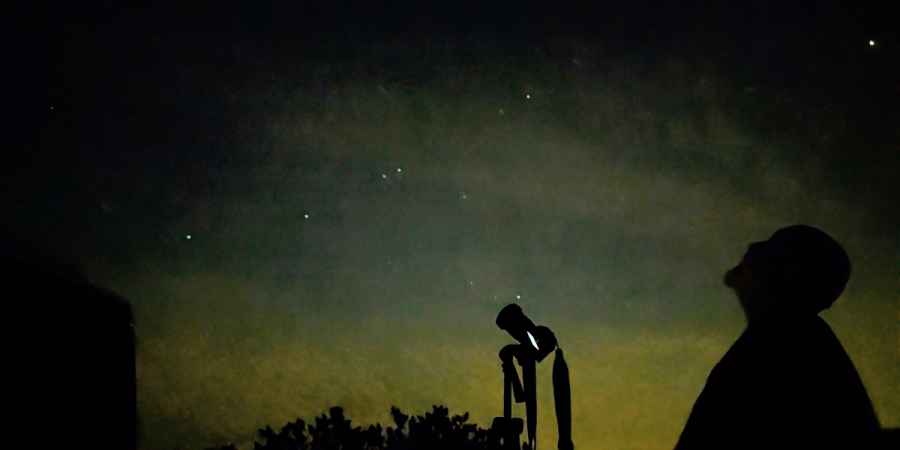
The history of UFOs is a journey filled with stories of alleged sightings, government investigations, and cultural changes. It all began with Kenneth Arnold's famous sighting in 1947 and includes major events like the Roswell Incident, influential figures such as Dr. Steven Greer and Nick Pope, and even recent government hearings. What was once considered wild and strange is now taken seriously by many. Over the years, the media, scientists, and increased government transparency have all played a role in shaping how the public views these mysterious sightings in the sky.
The Start Of UFO Phenomena: Kenneth Arnold & Roswell (1947)
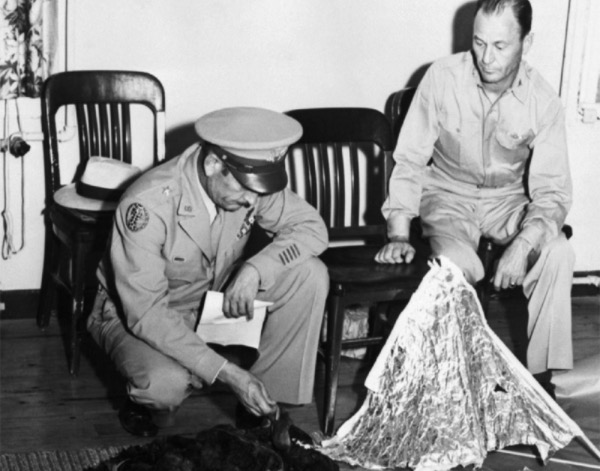
On June 24, 1947, a private pilot named Kenneth Arnold was flying near Mount Rainier in Washington State when he saw something very unusual in the sky. Arnold said he saw nine bright, disc-shaped objects moving at speeds of over 1,700 miles per hour. This was much faster than any known aircraft of the time. The objects were flying in a formation, weaving around each other, which really caught Arnold's attention and became known as one of the most famous early UFO sightings.
Arnold described the way the objects moved as being like "saucers skipping on water." The press picked up on this, and that's how the term "flying saucer" was born. Even though Arnold didn't actually say the objects looked like saucers, the phrase spread quickly and became popular in describing UFOs.
The sighting got a lot of media attention and led to many more UFO reports all over the United States. Since Arnold was an experienced pilot, his sighting was taken more seriously, and it was harder for people to dismiss his claims. At the time, skeptics and military officials offered different explanations, like mirages or secret military tests, but no clear answer was ever given.
What made Arnold's sighting especially interesting was its timing. It happened during the Cold War, a period when tensions between the United States and the Soviet Union were growing. This led to fears about advanced military technology. Some people thought the objects might be Soviet aircraft, while others believed they could be extraterrestrial observing the politic unrest.
Arnold's report laid the foundation for a major cultural and scientific interest in UFOs, inspiring future investigations into unexplained things seen in the sky. Although no one ever fully explained his encounter, many people see Arnold's encounter as the start of the modern UFO, bringing the topic into mainstream discussion.
Just a few weeks after Arnold's sighting, another major event occurred in July 1947, the Roswell Incident. A rancher named William "Mac" Brazel found strange debris scattered across his land near Roswell, New Mexico. The wreckage was made up of materials that Brazel couldn't identify, so he reported it to the local authorities.
Soon after Brazel's discovery, the US military got involved, and the story took a strange turn. At first, the military put out a press release saying they had recovered a "flying disc." This caught the attention of the media, and it seemed like the mystery of flying saucers might have been solved. But just hours later, the military changed their story, saying the debris was actually from a weather balloon and nothing unusual.
Even though the official explanation was that it was just a weather balloon, the Roswell incident did not fade away. Over the years, more and more people began to question what really happened. Some believed the materials Brazel found were too advanced to be from a weather balloon, and they started thinking the wreckage might have come from an alien spacecraft. This theory gained popularity in the 1970s when some witnesses, including former military personnel, came forward claiming there had been a cover-up and that alien bodies were found along with the wreckage.
The US government continued to deny these claims, saying the debris was from a secret project called "Project Mogul." This project used high-altitude balloons to detect Soviet nuclear tests, and while this explanation fits the timeline and made sense for the materials recovered, it did little to stop the conspiracy theories from spreading.
The Roswell incident is still a major part of UFO history. It has inspired countless books, documentaries, and movies, fuelling the public's imagination about government secrets and the possibility of alien life. Whether it was just a weather balloon or something much more mysterious, the events at Roswell remain one of the most famous and debated UFO cases in history, keeping alive the idea that the truth might be out there, just hidden from view.
Advertisement ‐ Content Continues Below.
Early Evidence & Government Involvement (1950-1956)
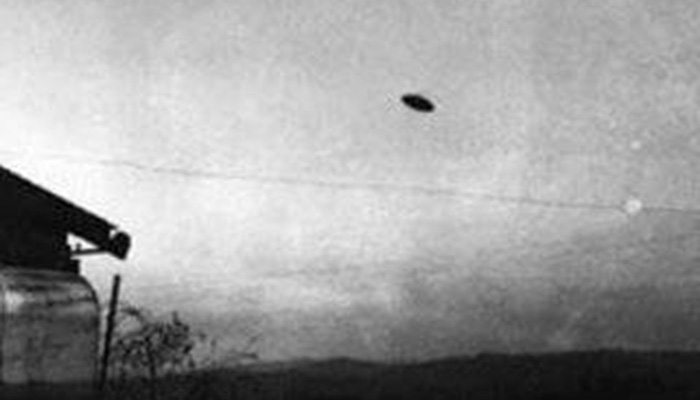
In May 1950, Paul and Evelyn Trent, who lived on a farm in McMinnville, Oregon, took two of the most famous UFO photos ever. The photos showed a metallic, disc-shaped object hovering in the sky above their farm. Unlike many UFO stories of the time that are just based on people's accounts, these photos seemed like real proof of a UFO and quickly gained a lot of attention.
According to the Trents, Evelyn first saw the object and called for Paul, who grabbed his camera and took two pictures before the object disappeared. These photos were later published in the local newspaper, the McMinnville Telephone-Register, and even made it into LIFE magazine, making them known across the country.
However, people have debated whether these photos are real ever since. Some skeptics think the object in the pictures could have been a model, possibly hung by a thread, and some photo analysis seems to support this idea. The way the object looked and the quality of the photos made some experts think it could have been a hoax made by the Trents.
On the other hand, many UFO enthusiasts and some investigators believe the photos are real. Some detailed analysis of the negatives by different experts over the years has shown mixed results. While some say there is evidence of faking, others argue that the object seems to reflect sunlight in a way that matches a solid, metallic structure. Supporters of the photos also point out that the Trents were simple farmers who never tried to make money or get famous from the incident.
The McMinnville photos have become an important part of UFO history. Even though there is no final proof either way, they are often seen as some of the best photographic evidence of a UFO. Whether the photos are real or not, they still interest people today and spark debate among believers and skeptics.
In 1951, while training as a pilot over West Germany, future NASA astronaut Gordon Cooper saw something that would become a defining moment in his belief in extraterrestrial life. Cooper said he saw a group of unidentified flying objects that were moving at incredibly high speeds, far faster than any aircraft known at that time. The objects moved in ways that seemed impossible, which made Cooper think they were not from Earth.
Cooper's sighting happened during the Cold War, a time when the military was very alert to anything that could be a threat from the Soviet Union. Since Cooper was an experienced pilot, his sighting was taken more seriously, but it did not get a lot of public attention right away.
It wasn't until many years later that Cooper spoke in detail about the sighting. In his 2000 autobiography, 'Leap Of Faith', Cooper talked about his UFO experiences and said he strongly believed in extraterrestrial life. He said the 1951 sighting was just one of several UFO incidents he had witnessed during his career. Cooper also talked about how frustrated he was that UFO sightings were often ignored or dismissed by officials.
In 1978, Cooper appeared on 'The Merv Griffin Show' and openly talked about his UFO sighting. He said that during his time with NASA, he knew of other astronauts who had also seen UFOs, though these reports were usually kept secret. Since Cooper was a well-respected astronaut who had flown on both the Mercury and Gemini missions, his statements made people take the subject of UFOs more seriously.
Although Cooper's claims did not lead to any big investigations or official acknowledgement from NASA or the US government, his story added an important voice to the growing conversation about UFOs. His reputation as a pioneering astronaut helped draw more attention to the idea that these unexplained aerial phenomena might be connected to extraterrestrial life.
Gordon Cooper's UFO sighting, along with reports from other credible witnesses, made people more interested in the idea of extraterrestrial encounters during the 1950s. Around the same time, the topic of alien life was becoming a part of popular culture. This was reflected in the release of the 1951 sci-fi movie 'The Day The Earth Stood Still', which told the story of an alien visitor coming to Earth with a message for humanity.
The movie showed an alien named Klaatu, who did not come to conquer but instead came as a diplomat, trying to warn humanity about the dangers of their violent ways. This idea of alien visitors with peaceful or warning intentions has been part of many UFO accounts over the years, with some people believing that extraterrestrial beings might be watching human actions, especially those related to war and nuclear weapons.
The movie explored ideas about communication, mistrust, and peaceful coexistence. It resonated with people who were interested in UFOs at the time, just as Gordon Cooper believed some UFO sightings could be related to extraterrestrial concern for human behaviour, 'The Day The Earth Stood Still' suggested that contact with aliens could be a chance for growth rather than something to fear.
The movie made people even more curious about UFOs and influenced how many viewed the possibility of extraterrestrial contact. It helped spread the idea that meeting beings from other worlds might be about more than fear, it could be about learning and cooperating.
In 1952, Delbert Newhouse, a Navy warrant officer, filmed something strange while he was driving through Tremonton, Utah. On July 2, Newhouse and his family saw several strange objects in the sky. He quickly got his 16mm film camera and recorded more than a minute of footage showing several bright, disc-like objects moving in strange ways in the sky. The footage was blurry and distant, but it became one of the most talked-about pieces of UFO evidence at the time.
The US Air Force later studied the film as part of its UFO investigations under Project Blue Book, which aimed to determine if UFOs posed a threat to national security. Experts analysed the footage, but they could not come to a definite conclusion. Some thought the objects could have been birds or reflective debris, but no one was sure.
Newhouse's footage, like the McMinnville photos, became an important piece of UFO history. It was another example of visual evidence that supported people's accounts of seeing UFOs, and it sparked both curiosity and serious investigation. The unclear nature of the footage left the public wondering, much like they had after Kenneth Arnold's sighting and the Roswell incident.
In 1952, the same year Newhouse filmed the Tremonton footage, the US Air Force launched Project Blue Book, a major investigation into UFO sightings. The timing of this project was no coincidence, there were a lot of UFO sightings in the early 1950s, and people were worried about what these sightings might mean. Project Blue Book aimed to study these reports more closely to figure out what was really going on.
Through Project Blue Book, the Air Force collected and studied thousands of reports, photos, and films to look for patterns or explanations. As the investigations continued, Project Blue Book became a key part of the debate about whether UFO sightings were extraordinary events or just easily explained mistakes. The findings of Project Blue Book played a big role in shaping how UFOs were seen by the public, the media, and the government.
In July 1955, Col. William D. Coleman, an experienced US Air Force pilot, had his own close encounter. While flying a B-25 bomber near Miami with his co-pilot, Coleman saw a round, saucer-shaped object moving through the sky. Unlike many other witnesses, Coleman kept quiet about what he saw for over 20 years. He was aware of the stigma around UFO sightings, especially as a high-ranking officer, and didn't want to cause any trouble.
It wasn't until 1977, when promoting his TV show 'UFO Project', that Coleman talked publicly about what he saw. His decision to share his story added more credibility to the growing number of UFO reports made by military personnel. By the late 1970s, interest in UFOs was at an all-time high, and Coleman's account was another example of how even trained pilots could not always explain what they saw.
In 1956, Edward J. Ruppelt, the first director of Project Blue Book, published 'The Report On Unidentified Flying Objects'. Ruppelt had been in charge of Project Blue Book in its early years, so he knew a lot about the US Air Force's efforts to investigate UFOs. His book was one of the first to take a serious look at the subject of UFOs and tried to bring a scientific approach to the investigations.
In the book, Ruppelt described some of the most interesting cases that Project Blue Book investigated and shared insights into the challenges of studying UFO sightings. He also highlighted cases that could not be easily explained, suggesting that some sightings deserved more serious attention. Ruppelt's book helped change the way people thought about UFOs, making it seem like not all sightings were just hoaxes or misidentifications. For many, it marked an important turning point, giving the topic more credibility and encouraging people to take UFO sightings seriously.
Famous UFO Sightings & Military Encounters (1957-1969)
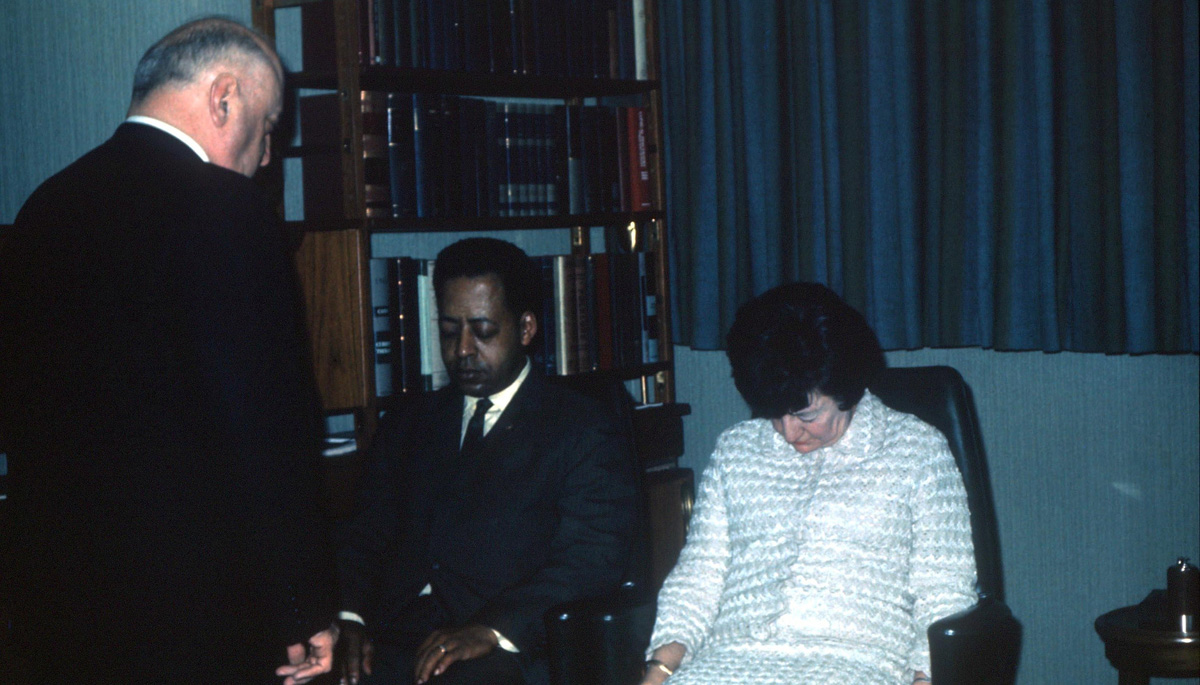
As Project Blue Book continued its investigations, UFO sightings were sometimes witnessed by large groups of people, making them harder to dismiss. One major case happened in Levelland, Texas, in November 1957. Many independent witnesses reported seeing a glowing object emitting blue flashes of light. The fact that so many people saw it made this one of the most well-known sightings of the time and boosted public interest in UFOs.
Over one night, many residents of Levelland reported seeing the strange object. They described it as a bright, glowing craft that caused their car engines to stall as it passed by. Sheriff Weir Clem was one of the local authorities who responded to the reports, and although he didn't see the object himself, his involvement added credibility to the witnesses' stories. The incident got national attention, and even years later, people like Clem's widow and friends spoke publicly about what had happened.
Around the same time as the Levelland incident, another similar sighting took place nearby at the White Sands Proving Ground. There, three military personnel reported seeing an unidentified object flying at high speed. The fact that both of these sightings happened so close to each other and involved both civilians and military witnesses made it difficult for investigators to dismiss them as simple mistakes or natural occurrences.
In 1959, one of the most interesting UFO sightings took place in Papua New Guinea. Anglican missionary William Gill and 37 others reported seeing a UFO with humanoid figures aboard. This case was significant because of the number of witnesses and the detailed descriptions they provided.
Over two nights in June 1959, Gill and the others saw a large, glowing craft hovering in the sky. According to Gill, the craft seemed to have legs extending downwards. Even more surprising, they saw humanoid figures on top of the craft, moving around as if they were doing something. Gill and the others even waved at the figures, and they were shocked when the figures seemed to wave back. This kind of interaction was very rare in UFO reports and made the encounter feel more personal.
Gill was a well-respected missionary, and the fact that so many people saw the same thing added credibility to the story. Unlike other UFO sightings that could be mistaken for aircraft or natural events, this one involved multiple people watching the same strange craft for a long time.
One of the most famous UFO cases happened on the night of September 19, 1961, when Betty and Barney Hill said they were abducted by aliens. Their experience, which took place in the White Mountains of New Hampshire, became the first widely known alien abduction story and led to many others over the next few decades.
The Hills were driving home from a trip to Canada when they saw a bright light in the sky that seemed to be following them. As it got closer, Barney used binoculars and saw what looked like humanoid figures in the windows of a spacecraft. The couple got scared and tried to drive away, but soon they couldn't remember what happened, and their next clear memory was of arriving home much later than expected, with no idea of what happened during the lost time.
The Hills started having strange dreams and anxiety after the incident. In 1964, they underwent hypnosis with Dr. Benjamin Simon, a psychiatrist, to try to figure out what had happened. Under hypnosis, both Betty and Barney described being taken aboard an alien spaceship, where they were given medical exams by small, grey-skinned beings. Betty also remembered one of the beings showing her a star map, which she later drew from memory. This star map became a big focus of interest for UFO researchers, who tried to match it to real star systems.
The Hills' story got a lot of attention and was featured in books, articles, and even a 1975 TV movie called 'The UFO Incident'. Their detailed descriptions under hypnosis sparked a lot of interest in alien abduction stories. While some skeptics think that their memories might have been influenced by psychological factors or science fiction, the Hills' case is still one of the most well-known and talked-about abduction stories.
The Betty and Barney Hill story set the pattern for many later reports of alien abductions, including things like missing time, medical examinations, and interactions with "grey" aliens. The story got people interested in close encounters with aliens, and just a few years later, another famous case sparked more interest. On April 24, 1964, police officer Lonnie Zamora in Socorro, New Mexico, reported seeing two beings near a shiny oval-shaped object.
While on patrol, Zamora saw a bright flame in the sky, which he first thought was a car accident or explosion. When he drove closer to check it out, he found a shiny, metallic craft resting on the ground, supported by landing legs. He also saw two small humanoid figures in white clothing standing next to the object. As Zamora got closer, the beings quickly went back into the craft, which then made a loud roaring noise and lifted off, leaving burnt plants and marks in the ground.
Zamora's report got a lot of attention, and the spot where it happened became a popular place for people to visit. Unlike many other UFO sightings, this one had physical evidence, like burn marks and impressions in the earth, which added to Zamora's credibility. Since he was a respected police officer, his story was harder for skeptics to dismiss.
This case was also investigated by Project Blue Book, which, after a thorough examination, could not come up with a definite explanation for what Zamora saw. Like the Betty and Barney Hill case, the Zamora incident suggested that UFO encounters might involve more than just seeing strange objects in the sky, they could include actual interactions with beings from beyond Earth.
After Zamora's sighting, public interest in UFOs kept growing, especially when more sightings were reported across the United States. One of the biggest waves of sightings happened in March 1966, when hundreds of people in Michigan reported seeing strange lights and flying discs in the night sky. Because so many people saw the lights, it led to a lot of media coverage and speculation.
With all the public pressure, the US Air Force asked Dr. J. Allen Hynek, Project Blue Book's chief scientific advisor, to investigate. After looking into the reports, Hynek suggested that the lights people saw were probably caused by "swamp gas". These are gasses caused by decaying plants in swampy areas. Many people were unhappy with this explanation, feeling like it didn't fully explain the details of what they had seen. The term "swamp gas" became infamous and was seen as a way to dismiss people's experiences.
Hynek's "swamp gas" explanation frustrated many witnesses who felt their sightings were not being taken seriously. Despite the controversy, the term became famous and even appeared in pop culture, like in episodes of 'The X-Files', where it was used as a joke about how officials dismiss UFO sightings.
By the late 1960s, Project Blue Book had been investigating UFO sightings for nearly two decades. The project looked into over 12,000 cases, but on December 17, 1969, the US Air Force officially ended Project Blue Book, saying that most UFO sightings could be explained by conventional aircraft, natural events, or hoaxes.
The project's final report said that UFOs did not pose a threat to national security, and there was no evidence that any of the sightings were connected to aliens. Investigators found that most reports were just people misinterpreting things like weather balloons, planes, or even planets and stars. Even the cases that had no immediate explanation were not seen as important enough to keep investigating.
Cultural Impact & Media Coverage (1970s-1980s)
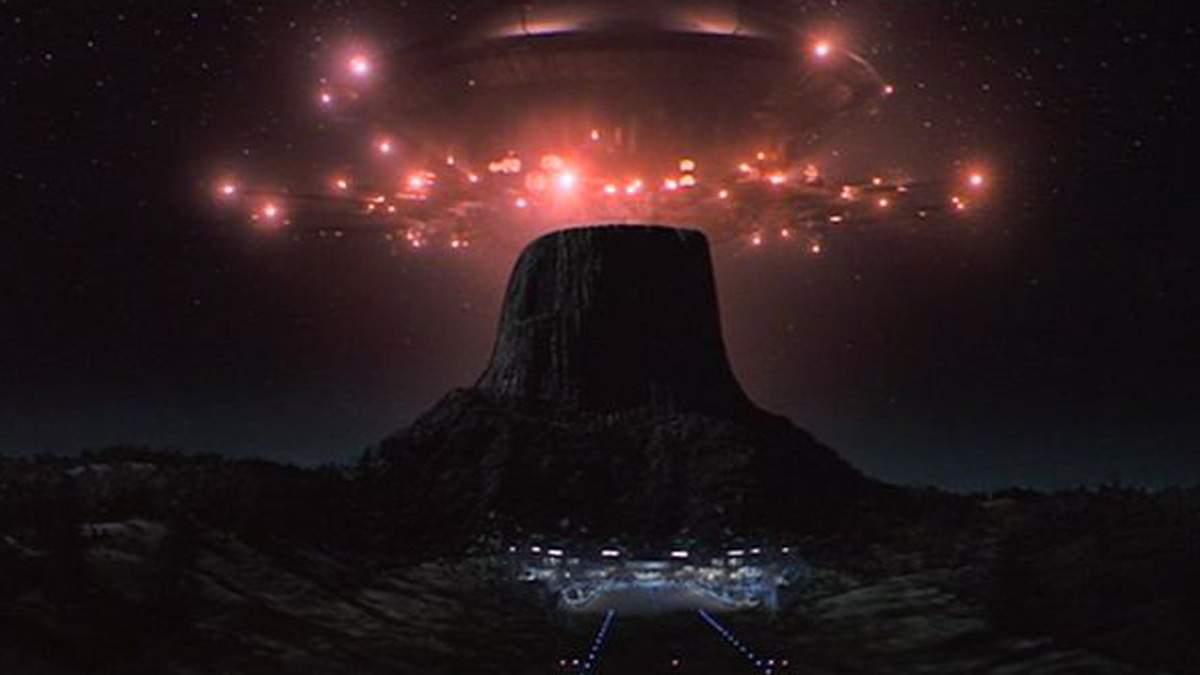
Despite the official closure of Project Blue Book in 1969, public fascination with UFOs did not fade. Instead, interest continued to grow, driven by the impact of high-profile sightings, ongoing reports, and the sense of mystery around these phenomena. This growing interest reached new heights in 1977 with the release of Steven Spielberg's groundbreaking film 'Close Encounters Of The Third Kind', which played an important role in changing how people viewed UFOs and extraterrestrial life.
The film, which explored human encounters with UFOs, helped popularise the idea that extraterrestrial visitors might not be hostile. Instead, they could be peaceful and interested in making contact. In 'Close Encounters', the main character experiences strange events that lead him to believe aliens are trying to communicate with humanity. This theme resonated with many real-life UFO reports and abduction stories that had emerged in the years before, such as the Betty and Barney Hill abduction.
Spielberg's portrayal of UFOs as mysterious but ultimately friendly changed the public perception of extraterrestrial contact from something to fear into something to be curious about. The film showed the aliens communicating through music and light instead of aggression or violence, offering a new way of thinking about UFOs. Rather than focussing on conspiracy theories or fear, 'Close Encounters Of The Third Kind' presented the possibility that encounters with UFOs could be an opportunity to communicate with an advanced civilisation.
The success of the film also renewed mainstream interest in UFOs, bringing the subject back into serious discussion and inspired a new generation of UFO enthusiasts and researchers, keeping the mystery alive in popular culture and serious inquiry. This increased attention on the subject led to a major event in 1977 when the United Nations held a special symposium on UFOs, marking one of the first formal international discussions on the topic.
Organised with the support of Sir Eric Gairy, the Prime Minister of Grenada, the symposium highlighted the need for serious study and international cooperation to understand UFO sightings. Gairy, a strong believer in the importance of UFOs, called on world governments to investigate the phenomenon more seriously, arguing that UFOs should not be dismissed or ridiculed but instead studied for their possible impact on humanity.
The symposium brought together experts, researchers, and even military personnel who believed that UFOs deserved more scientific study. While skeptics continued to argue that most sightings could be explained by natural or human-made causes, the event showed that the subject of UFOs had moved beyond just speculation and into the realm of legitimate investigation.
Although the symposium did not lead to any immediate global actions, it reinforced the idea that UFOs should be taken seriously by world governments and that an international approach might be needed to solve the mystery of unidentified aerial phenomena. It also underscored the growing demand for transparency and open discussions about what UFOs might mean for humanity.
The UK soon found itself at the centre of one of the most famous and well-documented UFO cases in history. In December 1980, over several nights, military personnel stationed near Rendlesham Forest in Suffolk reported seeing strange lights and an object they described as craft-like, just outside the perimeter of RAF Woodbridge, a base used by the US Air Force.
The Rendlesham Forest incident happened between December 26 and 28, with the first sighting occurring in the early morning hours. US servicemen reported seeing bright, unexplained lights in the forest. When they went to investigate, they claimed they found a metallic object with strange markings hovering just above the ground. One of the men, Sgt. Jim Penniston, said he touched the object and described it as smooth, with symbols that looked like hieroglyphics carved into its surface.
On the following nights, there were more sightings, with additional military personnel witnessing the strange lights. The event was documented in a memo by Deputy Base Commander Lt. Col. Charles Halt, known as the "Halt Memo." Halt also recorded his observations on a tape recorder while he and others chased the lights during a later sighting, capturing the confusion and amazement among the men.
The Rendlesham Forest incident is often called the "British Roswell" because it involved military witnesses, physical evidence like marks in the ground, and radiation levels that were reportedly measured at the landing site. The case has led to many investigations, debates, and theories about what really happened during those nights.
The Rise Of UFO Theorists & Investigators (1987-1990s)
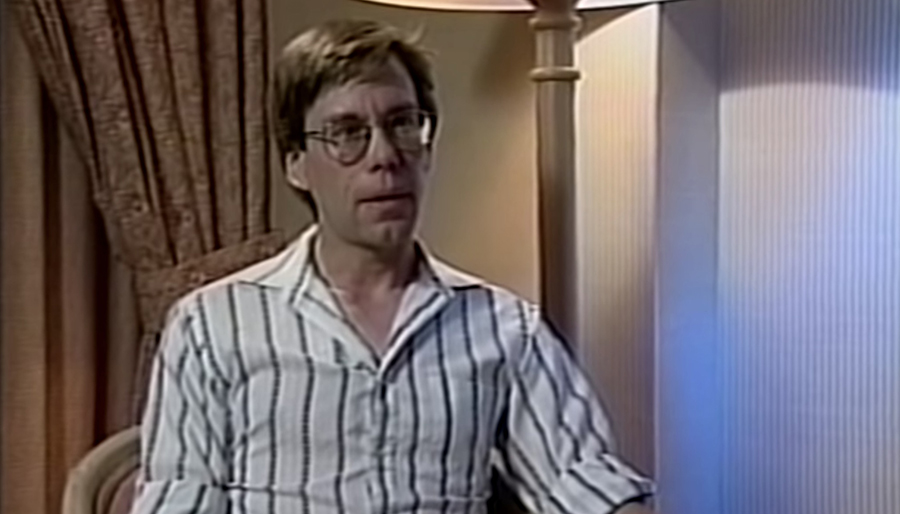
Photo: youtube.com
The Rendlesham Forest incident had led to more people beginning to believe in government cover-ups about UFO sightings. In 1987, Timothy Good published 'Above Top Secret: The Worldwide UFO Cover-Up', which added even more fuel to these speculations. The book was full of witness accounts, documents, and insider information. Good argued that governments, especially the United States, had been hiding evidence of UFO encounters for years.
In 'Above Top Secret', Good talked about many instances where he believed governments ignored or suppressed credible UFO reports, often involving the military or government officials. He covered cases from the UK, the US, and other countries, suggesting that much more was known about these sightings than was being told to the public.
Good's book had a big impact on both the UFO community and the public. It helped many people see UFO sightings not just as random events but as part of a bigger, hidden story involving worldwide secrecy. Good's claims played into people's growing suspicions that governments were hiding the truth, especially during the Cold War when trust in authorities was already low.
Timothy Good didn't stop with 'Above Top Secret'. He wrote several more books exploring UFOs and expanding on his theories about government cover-ups. His detailed research made him one of the leading voices in UFO literature. Because of him, more people started to think of UFOs as a topic worthy of serious investigation, and his books became key reading for anyone interested in the debate over UFO cover-ups and government involvement.
Around the same time Timothy Good's work gained popularity, another key figure in UFO culture was emerging, Art Bell. In 1988, Bell started a late-night radio show called Coast to Coast AM. It would become one of the most popular places for discussions about UFOs, conspiracy theories, and other paranormal topics. Bell's show offered a space for people to explore the mysteries of the universe without judgement, and his open-minded approach allowed many different viewpoints to be heard.
Coast to Coast AM aired late at night, making it perfect for listeners interested in the unexplained. UFOs quickly became one of the most talked-about subjects on the show. Bell interviewed witnesses, researchers, and even military insiders who said they had seen or knew about UFOs. His willingness to take these stories seriously, even when they sounded strange, set him apart from other media.
Bell didn't just focus on UFOs, his show also covered secret government projects, alien abductions, and crop circles. His style connected with people who felt that regular media laughed at or ignored these topics. Because of this, Coast to Coast AM became a meeting place for anyone wanting to explore deeper mysteries and conspiracy theories.
Bell's influence went beyond just UFOs. He created a community of listeners who wanted to explore the unknown, and his show played a big part in keeping UFOs in the public eye throughout the 1990s and beyond. Coast to Coast AM became a cultural touchstone for anyone interested in extraterrestrial life, conspiracy theories, and mysteries beyond the usual explanations. As Bell's show set the stage for one of the most talked-about figures in UFO history, Bob Lazar.
In 1989, Lazar claimed that he had worked on alien technology at a secret base near Area 51 in Nevada. He made these claims during an interview with journalist George Knapp, and his story quickly gained attention. Lazar said he worked at a place called S-4, near Area 51, where he helped reverse-engineer a flying saucer of alien origin. He described advanced propulsion systems that supposedly used a mysterious material called Element 115 to manipulate gravity. According to Lazar, these crafts could do things that no human-made vehicle could.
Lazar's claims were controversial from the start. When people looked into his background, they found that schools like MIT and Caltech had no records of him, even though he said he studied there. This made many people doubt his story, and critics thought he might have made everything up.
Despite the questions about his background, Lazar's story became a big part of UFO culture. His descriptions of secret government projects and alien technology fed into long-standing theories about government cover-ups and Area 51. Over time, many in the UFO community embraced Lazar's story, especially since Area 51 became known as a place tied to government secrecy and possible alien activity.
While Bob Lazar was stirring up interest in alien technology in the US, Nick Pope was becoming one of the most well-known UFO researchers in the UK. Pope worked for the British Ministry of Defence (MoD) from 1985 to 2006, and in the early 1990s, he was responsible for investigating UFO sightings. His job was to see if these sightings were a threat to national security.
Pope's role involved looking at reports from military personnel, civilians, and law enforcement. Most of the time, these sightings could be explained as planes, satellites, or natural events. But Pope believed that a small number of cases were harder to dismiss. He was careful about drawing conclusions but was always open about the mysteries he couldn't explain. This made him a key figure in UFO research.
After leaving the MoD, Pope started talking more openly about his experiences, explaining how the British government investigated UFOs. He frequently appears in documentaries and interviews, and he has written books on the topic. His move from government investigator to public figure played a big role in making UFOs a mainstream topic in the UK.
As public interest in UFOs grew in the West, the early 1990s also saw an increase in UFO reports in an unexpected place, Moscow, Russia. In 1993, an American news report highlighted a series of historic UFO sightings in the Russian capital and nearby areas. This was notable because, during the Soviet era, state control over information meant that reports of UFO activity were often ignored or hidden.
After the Soviet Union collapsed in 1991, people in Russia were able to speak more freely, and many previously hidden UFO sightings began to come to light. The news report showed how this new openness allowed researchers and everyday people to talk about strange things they had seen in the sky. As more people felt free to report their experiences, there were more and more sightings of unusual objects over Moscow and other areas.
The report talked about some interesting cases, like sightings of glowing objects and fast-moving crafts seen by many people. Some of these sightings were near military bases, which made them even more intriguing because similar patterns were seen in the US and UK, where UFOs were often reported near important sites.
The 1993 news coverage helped widen the scope of UFO research, showing that UFOs were not just a Western issue but a worldwide mystery. In the same year, Dr. Steven M. Greer founded the Center for the Study of Extraterrestrial Intelligence (CSETI). Greer, who used to be an emergency room doctor, started CSETI to help people communicate with extraterrestrial beings peacefully. He wanted a new approach to understanding UFOs, one focused on making direct, peaceful contact instead of being afraid or guessing about possible dangers.
Greer believed that not only were aliens visiting Earth, but humans could also make contact with them. CSETI focused on creating protocols for making contact with extraterrestrials, known as the CE-5 initiative (Close Encounters of the Fifth Kind). These protocols involved things like meditation and using lights or sounds to signal UFOs.
Instead of waiting for UFOs to show up, Greer wanted people to actively try to make contact in a calm and organised way. He also pushed for more transparency from governments, encouraging them to share any information they might have about extraterrestrials.
Over the years, Greer and CSETI have organised many contact expeditions, where groups go to remote areas to try to communicate with UFOs. Although some people criticise his methods, CSETI has become an important part of the modern discussion about UFOs.
Public Fascination & Media Depictions Of UFOs In The 1990s
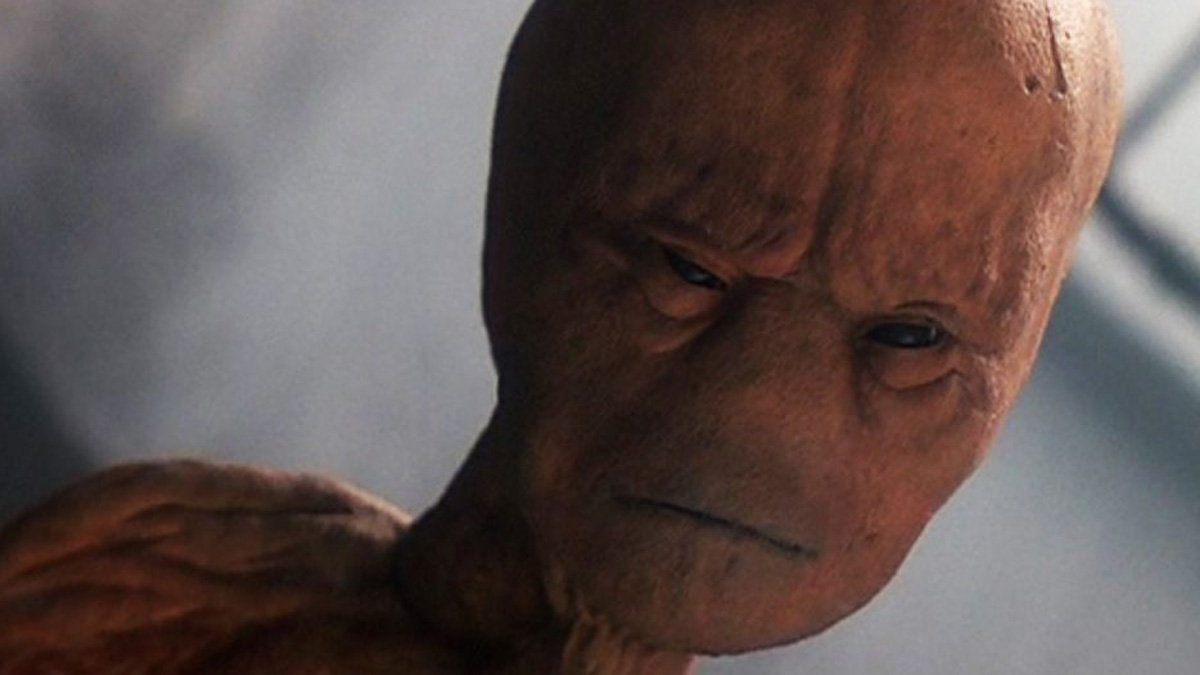
In 1993, the release of 'Fire In The Sky', a movie based on the supposed alien abduction of logger Travis Walton, brought the topic of alien abduction into the public spotlight. Walton's experience, which happened in 1975 near Snowflake, Arizona, was already one of the most well-known and debated abduction stories in UFO history, but the movie made even more people aware of it and interested in the idea of alien encounters.
Walton claimed that he and some fellow loggers saw a bright object in the sky while driving home from work one evening. Walton went up to the object, and according to him, a beam of light hit him, and he lost consciousness. His co-workers, scared by what they saw, fled the scene. They returned soon after but couldn't find Walton. Five days later, Walton reappeared, confused and with fuzzy memories of being on an alien spaceship, where he said he was examined by non-human beings.
'Fire In The Sky' dramatised Walton's story, focussing on how the event affected him, his friends, and their small community. The movie also showed the tension and disbelief around the case, as Walton's co-workers were accused of foul play during the investigation into his disappearance.
1960s. By the early 1990s, tales of alien abductions were becoming popular in mainstream culture, and Walton's story became one of the most well-known examples. The movie tapped into people's fears and curiosity about what might happen if someone had a close encounter with aliens, making abduction stories a more widely discussed part of UFO culture during the 1990s.
That same year, 1993, another major influence on modern UFO lore made its debut, 'The X-Files'. Created by Chris Carter, this television series follows FBI agents Fox Mulder and Dana Scully as they investigate unsolved paranormal cases, many involving UFOs, alien abductions, and government cover-ups. The show quickly became a huge cultural phenomenon, helping bring UFO conspiracy theories into mainstream entertainment.
At the core of 'The X-Files' is the contrast between Mulder, who believes in extraterrestrial life and the paranormal, and Scully, a skeptical scientist whose job it is to disprove his investigations. This dynamic reflected the public debate between believers and skeptics regarding UFO sightings and government secrets, a topic gaining traction thanks to people like Nick Pope, Dr. Steven Greer, and stories about Area 51 and Bob Lazar.
The show mixed real-life UFO conspiracy theories with fiction, creating an exciting universe full of alien abductions, secret experiments, and hidden government groups called "The Syndicate." Many episodes featured UFO sightings and mysterious disappearances, drawing inspiration from real-life accounts. By including these familiar stories, 'The X-Files' helped increase public interest in UFOs and supported the idea that governments might be hiding the truth about extraterrestrial contact.
As one of the longest-running sci-fi shows in TV history, 'The X-Files' became a defining force in UFO and paranormal culture. One of the show's most famous contributions to UFO culture was its tagline, "The truth is out there," which captured people's growing mistrust of official explanations for UFO sightings and strange phenomena.
In 1994, an incredible UFO event took place near Ruwa, Zimbabwe, that drew attention worldwide and became one of the most notable close encounter cases of the decade. Over 60 children and staff at Ariel School, located in a rural area near Ruwa, said they witnessed an alien landing during their morning break. The children, who were between six and 12 years old, described seeing a silver, disc-shaped craft land in a field just outside their schoolyard. They reported that strange beings with large eyes and thin bodies came out of the craft and approached them.
The children's descriptions of the beings and the craft were consistent across many witnesses, with some saying they even experienced telepathic communication. They said the beings gave them messages about environmental damage and warnings to humanity, similar to themes found in other close encounter reports. What made the Ruwa incident especially interesting was the large number of witnesses, over 60 children saw the event, and many of them drew detailed pictures of what they had seen.
The case quickly gained international attention and attracted investigators like Dr. John E. Mack, a Harvard psychiatrist who studied alien abduction experiences. Mack went to Zimbabwe to talk to the children and their teachers, and he found their stories very convincing. He was struck by the honesty and emotion the children showed and noted that their accounts didn't seem to be influenced by any previous knowledge of UFOs or aliens.
Despite this, some skeptics have called the Ruwa incident an example of mass hysteria, where a group of people, especially children, might misinterpret an unusual event or be influenced by each other. They argue that the children's imaginations might have been affected by media coverage of UFOs and alien stories, especially since there was a lot of interest in these topics at the time.
The Ruwa case stands out not just for the media attention it received but also for its lasting impact, becoming an important event in the history of UFO sightings. While the case involved aliens who seemed peaceful, just two years later, in 1996, the blockbuster movie 'Independence Day' showed the opposite, a massive alien invasion that threatened to destroy Earth.
Directed by Roland Emmerich, the movie connected with audiences by playing on the fear of the unknown, asking what if aliens came not to help but to conquer and destroy? The movie showed huge alien ships hovering over cities and causing massive destruction. This idea of hostile aliens had already been a part of science fiction for years, but 'Independence Day' made it feel more real for a lot of people, perhaps due to the memorable depiction of the White House being destroyed in the movie.
As 'Independence Day' brought the fear of hostile aliens into pop culture, real-life UFO sightings continued to grab public attention. Just a year after the movie came out, on March 13, 1997, one of the most widely seen UFO events in modern history happened, the Phoenix Lights. Thousands of people in and around Phoenix, Arizona, reported seeing a series of bright lights and a huge V-shaped craft in the sky, which sparked a lot of debate and interest.
The Phoenix Lights incident had two main events that night. The first was a large, silent, V-shaped craft slowly moving across the sky. It was said to be a large mass in the sky that blocked out the stars as it passed. Many witnesses described it as unlike anything they had ever seen. Later that evening, a group of bright lights appeared over Phoenix, staying in place for a long time.
At first, officials said the lights were flares dropped during a military training exercise, but many witnesses didn't believe this explanation. They said that the size and movement of the craft couldn't be explained by flares. The Phoenix Lights became one of the longest-lasting UFO mysteries, with the huge number of witnesses making it an important event in UFO history.
The Push For UFO Disclosure & Government Transparency (2000s-Present)
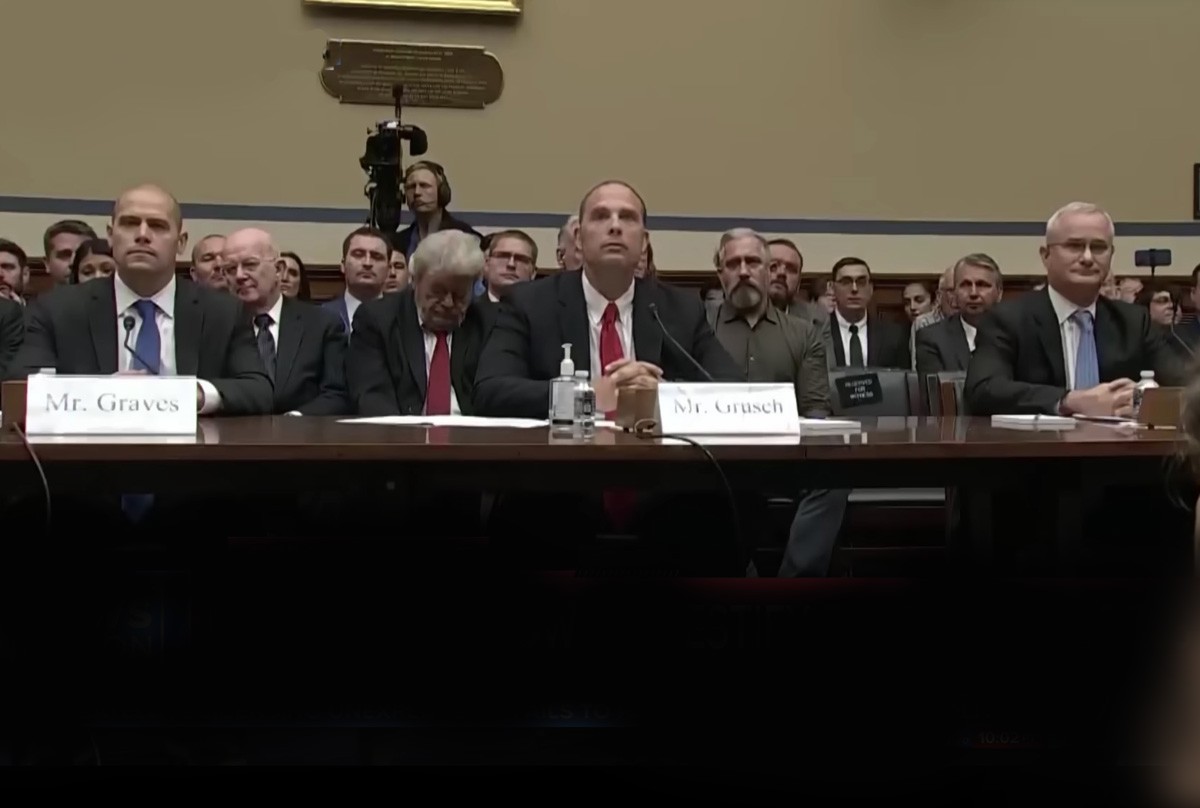
Photo: News Nation
Due to the interest generated by the Phoenix Lights, more people than ever wanted the government to be open about what they knew about UFOs. This push reached a high point in 2001 when Dr. Steven M. Greer, who started the Center for the Study of Extraterrestrial Intelligence (CSETI), organised an event called the "Disclosure Project." This event took place at the National Press Club in Washington DC, and brought together over 20 people from the government, military, and intelligence. These people said they had seen or knew about aliens and a government cover-up of UFO information.
The goal of the Disclosure Project was to get the US government to release secret documents about UFO sightings and alien encounters. Dr. Greer wanted credible witnesses, like retired military officers and aviation experts, to share their experiences. Many of them said they had direct knowledge of UFOs or had been involved in secret projects involving alien technology.
The witnesses told stories about seeing strange flying objects and even claimed that the government had recovered alien materials and bodies. The press conference got a lot of attention in the media because it was one of the biggest efforts to get people to share what they knew about UFOs.
This interest continued to grow in popular culture. In 2009, the movie 'The Fourth Kind' was released. It was about alien abductions and was set in Nome, Alaska. The movie was claimed to be based on real events and used a mix of regular storytelling and fake documentary-style footage, which made it feel even scarier and more real.
In 'The Fourth Kind', Milla Jovovich plays a psychologist investigating strange disappearances and reports of alien abductions in Nome. The movie combined a regular storyline with "real" interviews. It played into people's fears about aliens and the idea that they could be secretly interacting with humans. Even though 'The Fourth Kind' is mostly fiction, its marketing made it seem like it was based on real events, which added to people's belief that the truth about UFOs and alien contact was being hidden from them.
Also in 2009, the History Channel premiered 'Ancient Aliens', a documentary series about the idea that aliens have been visiting Earth for thousands of years. The show explored the "ancient astronaut theory," which says that aliens may have helped build ancient structures like the pyramids in Egypt, Stonehenge, and the Nazca Lines in Peru. The series featured interviews with authors and researchers like Erich von Däniken, who wrote 'Chariots Of The Gods?' in 1968, promoting the idea of ancient alien contact.
The beginning of the current UFO research era began with a major revelation on December 16, 2017, when The New York Times published a report revealing that the US government had secretly been investigating UFOs through a program called the Advanced Aerospace Threat Identification Program (AATIP). This news made many people reconsider their views on UFOs and see them as a legitimate subject for investigation.
The report said that AATIP ran from 2007 to 2012 and looked into UFO sightings reported by military personnel. It included video footage from US Navy pilots that showed mysterious flying objects doing things that seemed impossible, like moving at inconceivable speeds and changing direction suddenly. These videos became iconic in UFO discussions and proved that the government had been studying UFOs quietly.
The New York Times article and the statements from Luis Elizondo, who led AATIP, marked an important moment for UFO research. The discussion shifted from being just wild speculation to something that could be a national security issue. This openness made more people interested in UFOs.
In September 2019, the US Navy confirmed that several leaked videos showing unidentified flying objects were real. These videos were part of the 2017 report. The Navy acknowledged that the objects in the videos couldn't be explained in terms of known technology or natural events. This acknowledgement added to the evidence that UAPs (unidentified aerial phenomena) are real and could be a concern for national security.
In August 2020, the US Department of Defense set up the UAP Task Force to investigate UAP sightings. This was a big step in showing that the government was taking these sightings seriously. The task force was meant to gather and study UAP sightings, especially those by military personnel, to figure out if they posed any threat to national security. It showed that the government was no longer dismissing UFO sightings as mistakes or conspiracy theories but was instead trying to understand them better.
In January 2021, Harvard astrophysicist Avi Loeb published a book called 'Extraterrestrial: The First Sign Of Intelligent Life Beyond Earth'. The book wasn't just about UFOs, but it got people talking about the possibility of alien technology. Loeb suggested that an object called 'Oumuamua, which passed through our solar system in 2017, could be an alien-made device.
In June 2021, the US government released a highly-anticipated report on UAPs that marked a major step in acknowledging the topic. It looked at 144 UAP cases between 2004 and 2021, mostly reported by the military. Only one of these cases could be fully explained, a deflating balloon. The report avoided saying the UAPs were definitely aliens, but it did say that they were real, physical objects that couldn't be explained easily.
This was a big deal because, for decades, UFOs were considered a joke or something only conspiracy theorists talked about. Now, the government was saying that UAPs were worth investigating because they might pose a threat to national security. This report built on the work of the UAP Task Force and made UFOs a legitimate topic of discussion.
In 2023, former military and intelligence officials testified before US Congress about UAPs. They said that these phenomena could be a threat, especially since they could outmanoeuvre known aircraft and enter restricted airspaces. One of the witnesses, David Grusch, claimed that the US government had hidden information about UAPs for years. The congressional hearing was another big step in getting the government to be more open about UAPs. It showed that this issue was now a public concern, not just something talked about in secret.
More On UFOs
See All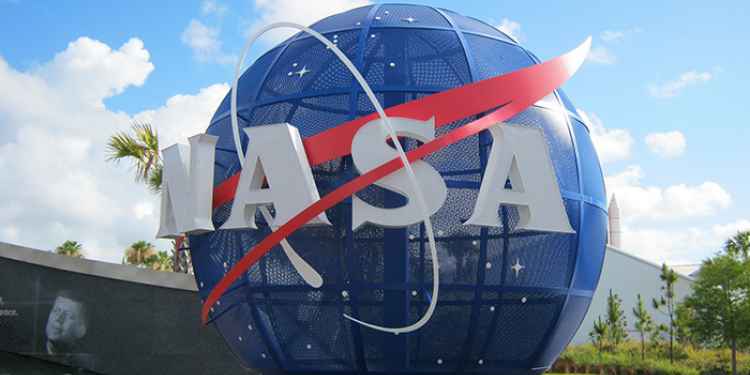
ArrayApril 12, 2025
What Do Astronauts Say About UFOs?
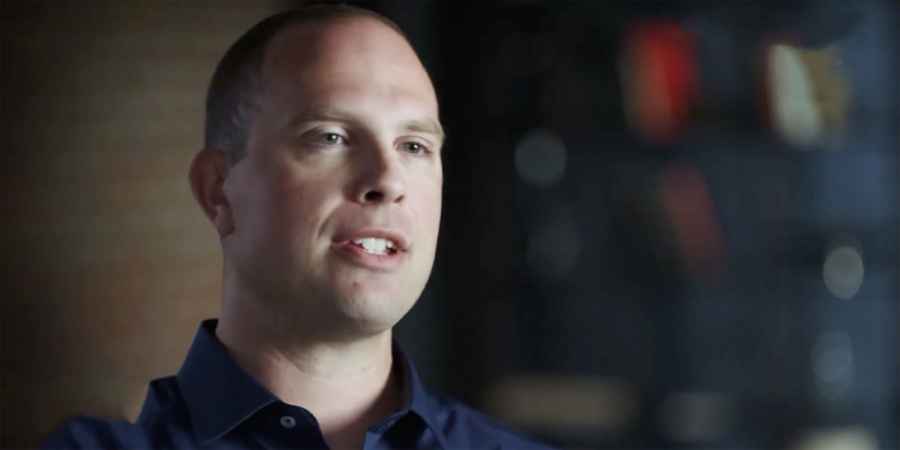
ArrayApril 04, 2025
David Grusch Claims US Government Possesses Multiple "Non-Human" Craft
Further Reading
Dive into the world of the paranormal and unexplained with books by Higgypop creator and writer Steve Higgins.
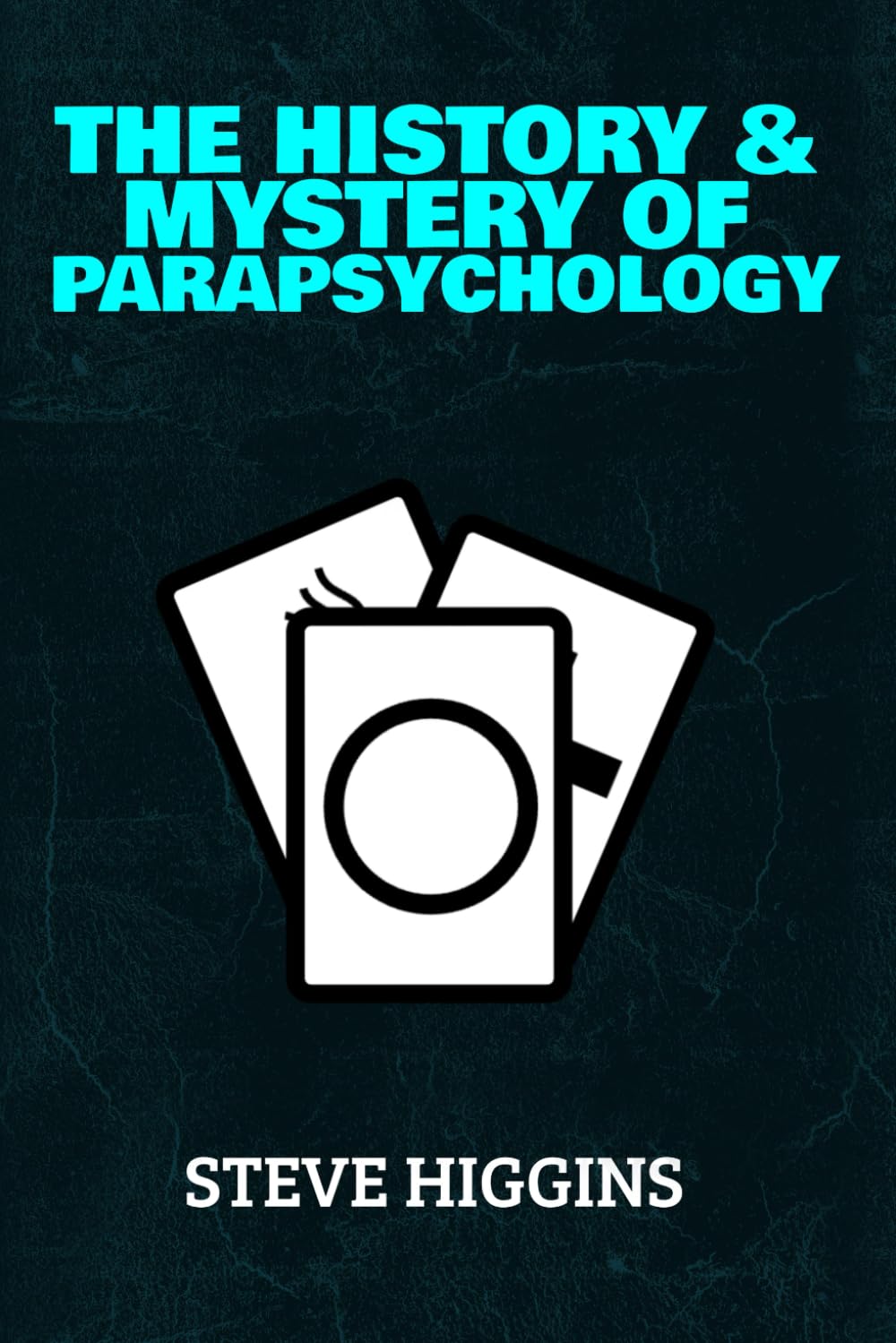
The History & Mystery Of Parapsychology
A deep dive into paranormal phenomena, exploring history, science, and psychology.
Buy Now
The Rational Demonologist
An exploration of demonic activity, including possession, protection, and exorcism.
Buy NowMore Like This

UfosApril 12, 2025
What Do Astronauts Say About UFOs?

UfosApril 04, 2025
David Grusch Claims US Government Possesses Multiple "Non-Human" Craft
 See More on Audible
See More on Audible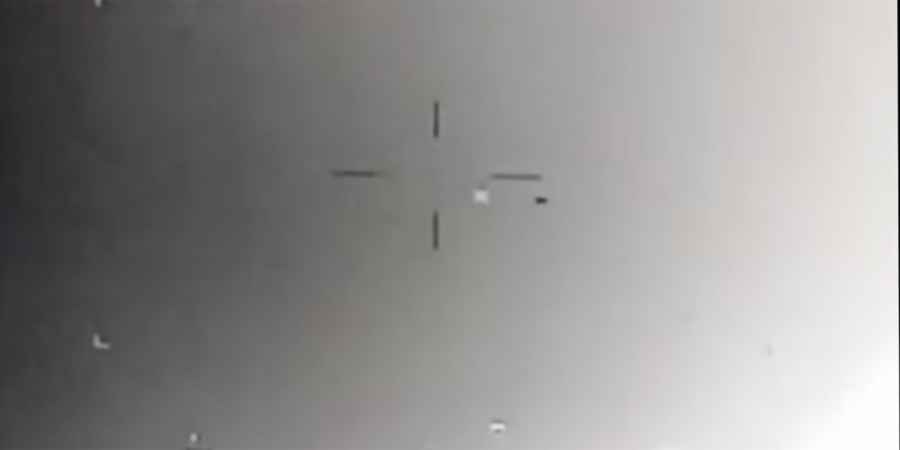
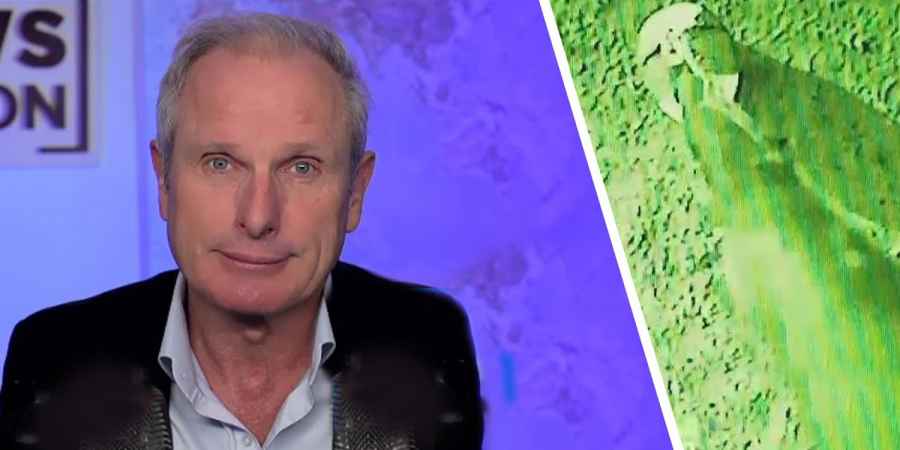

Comments
Want To Join The Conversation?
Sign in or create an account to leave a comment.
Sign In
Create Account
Account Settings
Be the first to comment.